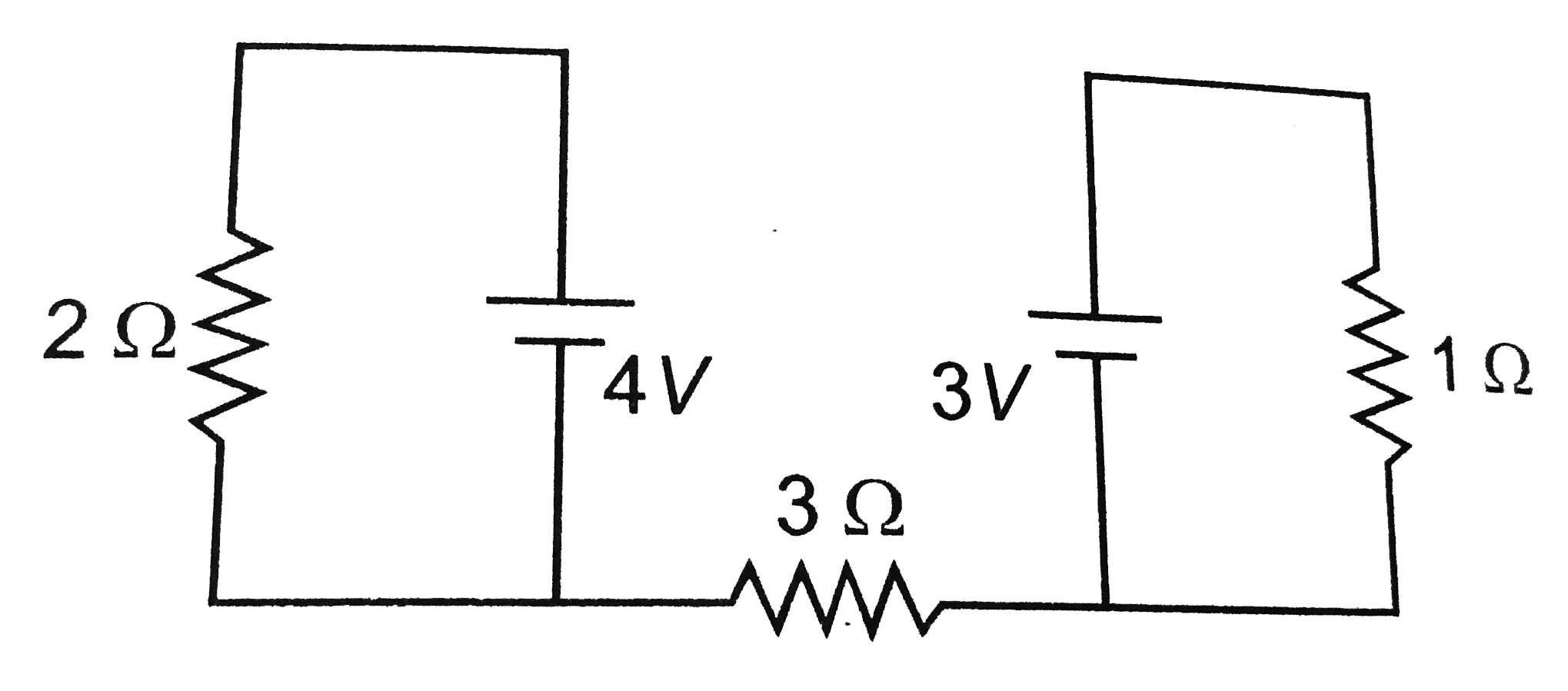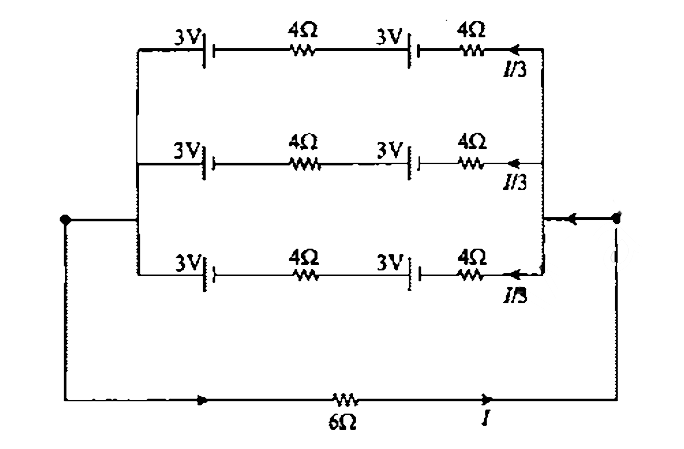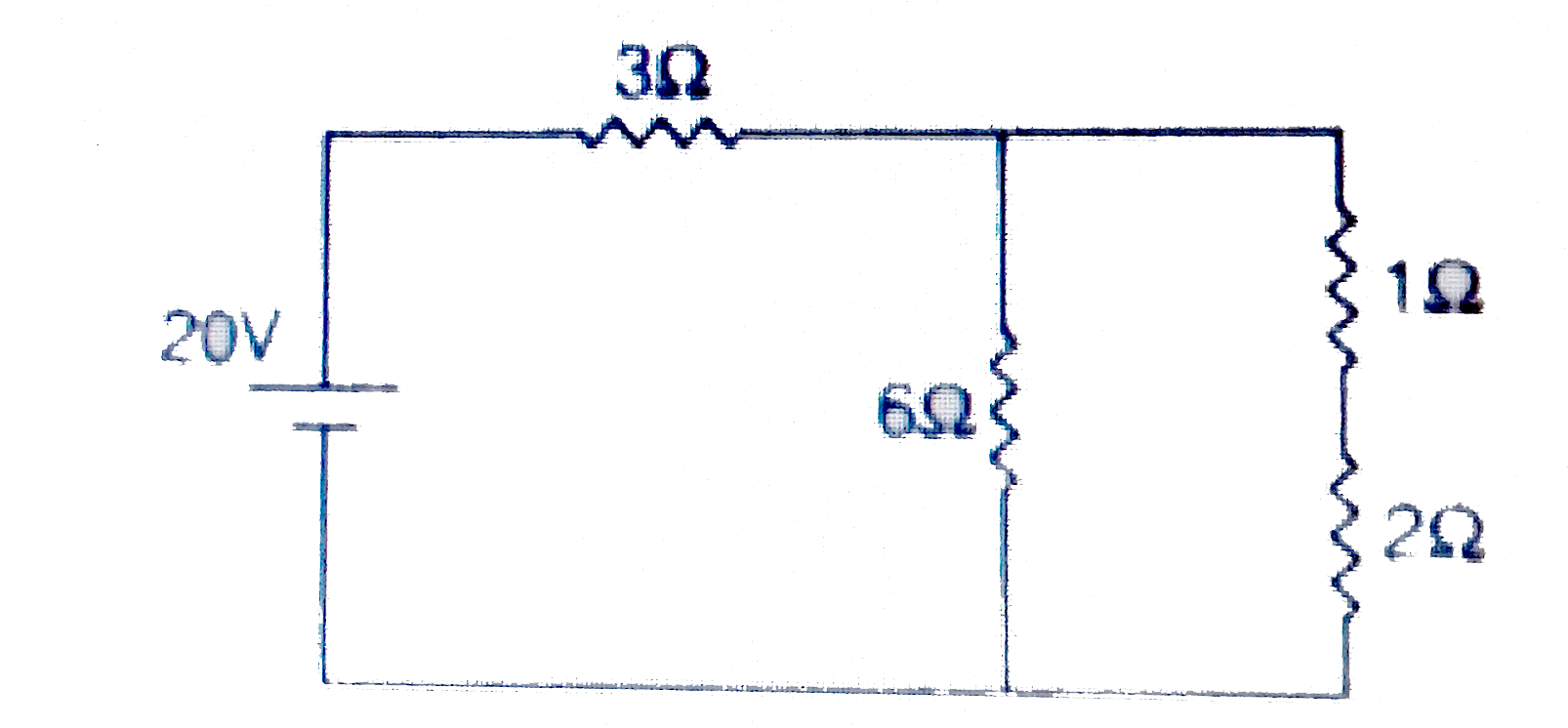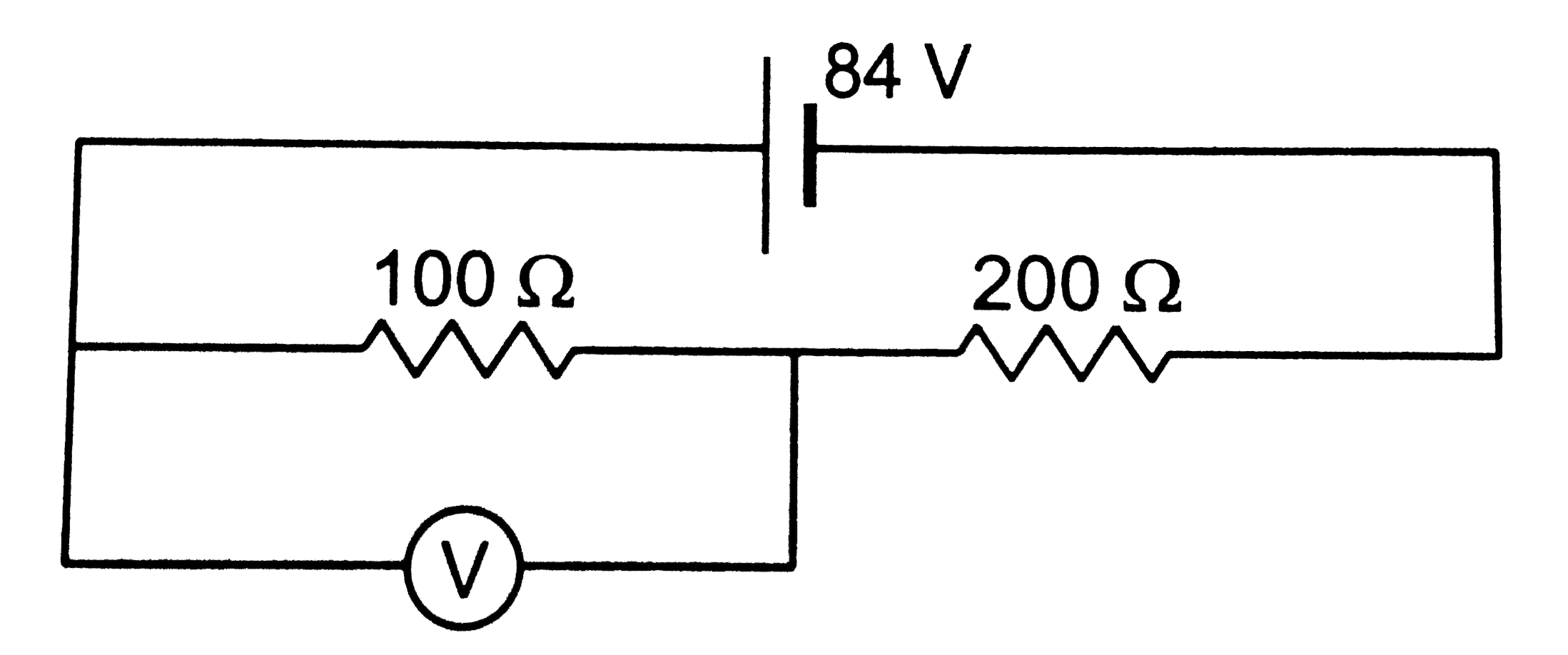Calculate (a) the equivalent resistance, (b) the electric current, and (c) the potential difference across each resistor in the circuit shown in Figure.

The and resistors are connected in series. Their equivalent resistance is
(b) The current is
(c) The potential difference across the resistor is
The potential difference across the resistor is
Similar Questions
Potential difference across AB in the circuit as shown in figure.

View SolutionPotential difference across AB in the circuit as shown in figure.

View SolutionThe potential difference across the 3 resistor shown in figure is

View SolutionFind current in 6Ω resistance and potential difference across each cell in circuit shown in figure-3.173.

View SolutionIn the circuit shown in figure potential difference across

View SolutionIn the circuit shown in figure potential difference across

View SolutionA voltmeter of resistances 400(Ω)is used to measure the potential difference across the 100(Ω)resistor in the circuit shown in figure.(a) What will be the reading of the voltmeter ?(b) What was the potential difference across 100(Ω)before the voltmeter was connected ?

View SolutionA voltmeter of resistances 400(Ω)is used to measure the potential difference across the 100(Ω)resistor in the circuit shown in figure.(a) What will be the reading of the voltmeter ?(b) What was the potential difference across 100(Ω)before the voltmeter was connected ?

View SolutionCalculate the equivalent resistance of the circuit shown in figure between the points a and b.

View SolutionA resistor of 4 ohm resistance and an electric lamp of 20 ohm resistance are connected in series across a 6 volt battery. Draw a lebelled circuit diagram by using the symbols for ohm and volt. Calculate:
(a) total resistance of the circuit.
(b) current flowing through the circuit.
(c) potential difference across the resistor.
(d) potential difference across the electric lamp.
View Solution
